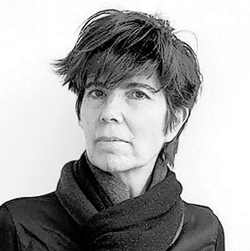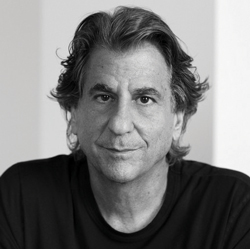Our cultural centers, which began as palaces, have been reduced to sheds. Specifically, the Shed, an artistic zone now rising in Hudson Yards, near the northern edge of the High Line park at West 30th Street.
An entire cultural and political revolution is implicit in that shift — in aspiration if not in reality.
Consider palaces of a century past like the Paris Opera House, designed by Charles Garnier, or the Metropolitan Museum, which was largely the work of Richard Morris Hunt and McKim, Mead & White. In both cases, an essentially middle-class, newly bourgeois society created, for its own use, a structure that took on the airs of ancient aristocracy. The Shed in Hudson Yards, by contrast, though conceptualized during the administration of a billionaire mayor, has proudly adopted a proletarian bearing.
But why a shed? That’s a particularly relevant question when the structure stands in such close proximity to some of the most expensive real estate in the world, a veritable playground for, if not aristocrats exactly, then plutocrats.

Elizabeth Diller
The term shed, of course, can refer to a simple structure meant to house trains that are being grounded or repaired, a nod to the original function of this part of the city — and to the trains that will continue to glide underneath the new neighborhood rising above their tracks. But there is more to the issue than that.
Just as 100 years ago, when an ascendant middle class felt it necessary to put on aristocratic airs, that same middle class now craves what it perceives as the seriousness, the validity of the working class. Billionaires wear blue jeans as though they had just come from a day on the farm. They want to make their homes in rusting factories like the Domino Sugar Refinery, and their most celebrated parks are adapted from abandoned train tracks, like the High Line, or abandoned trolley depots, like the proposed Lowline. And so a major new cultural institution claims to be a shed, just a shed. The implication being that those actors, dancers and visual artists whose work is presented in that space are serious types who roll up their sleeves and get to work, having rejected cultural effeteness in the name of a higher integrity.
The Shed’s design is the work of Diller Scofidio + Renfro [TRDataCustom], the creators of the High Line, working together with David Rockwell of the Rockwell Group. In recent years, Rockwell has been closely associated with the design of theaters, a track record that should came in handy on the present project.
Construction on the Shed, which started in mid-2015 and is scheduled for completion in 2019, is expected to cost a staggering $425 million — yet another reason that its faux-humble name is absurd.
When finished, it will include 25,000 square feet for museum displays and a 500-seat theater, as well as event and rehearsal space. The city, which will retain ownership of the land that the Shed sits on, controversially gave the project a $50 million capital grant in 2013, an unusually large sum for a nascent arts organization and the largest such grant awarded that year. It has now raised some $326 million toward capital construction costs; when completed, it will be run by a nonprofit entity known as the Shed Organization.
The Shed’s main entrance will be on 30th Street under the High Line, with another entrance at 31st Street, though the most conspicuous part of the project by far will not be the main six-story building, but its massive retractable shell. The telescoping shell, which can be unfurled on rails within 15 minutes, will transform the adjoining 20,000-square-foot open-air plaza into a “light-, sound-, and temperature-controlled” performance venue capable of accommodating a standing audience of 300,000 people.

David Rockwell
The problem is that the design is visually weak — at least if it ends up looking like the renderings. While the building showcases some sophisticated engineering (just watch the animated video for proof of that), the roof does little to enhance the design. As is the case with so much of the architecture that Diller Scofidio + Renfro has been associated with of late, the retractable shell suggests a grasping for gimmickry at all costs in a way that often results in dull design.
Here, as in so many of this firm’s recent projects, the dominant aesthetic is a reinvigorated mod style, a self-consciously retro 1960s throwback that has been combined with the calculated asymmetries of the deconstructivist style. This can be seen in the Shed’s tilted lozenge-like modules, as well as in the design of the main structure’s interior staircase, which recalls the firm’s work at Columbia’s College of Physicians and Surgeons in Washington Heights. Both the main structure and the shell are to be clad in pale glass curtain walls. Perhaps the most interesting design idea is the way in which the main structure and the shell are integrated into 15 Hudson Yards. The Shed is attached to that main building like a piece of 1970s luggage or a sound system of the day, with the shell nested over it when it’s not in use. But that is hardly enough to redeem the design or justify what may well be a sense of claustrophobia for the inhabitants of the main structure, who will have to exist under this heavy carapace more often than not.
In a certain sense, the proletarian ethos of this project is not so different from the aristocratic aspirings of an earlier age, other than in the specifics of outward design. Just as we know that the blue-jeaned billionaire is not really a farmhand, that his jeans are in fact designer and prohibitively expensive, so it is that the Shed fools no one.
Human beings, despite their many blind spots, nevertheless have an unerring instinct for spotting the ever-shifting markers of wealth and social status. Hudson Yards’ new Shed is no more a working-class venue than Grand Central Station was the abode of the king of France. Both projects were the result of presumption and pretension. But the presumption and pretension of a century ago gave us noble civic structures, while the sham proletarianism of our own day has given us the Shed — a botched, unlovely experiment of questionable utility.
